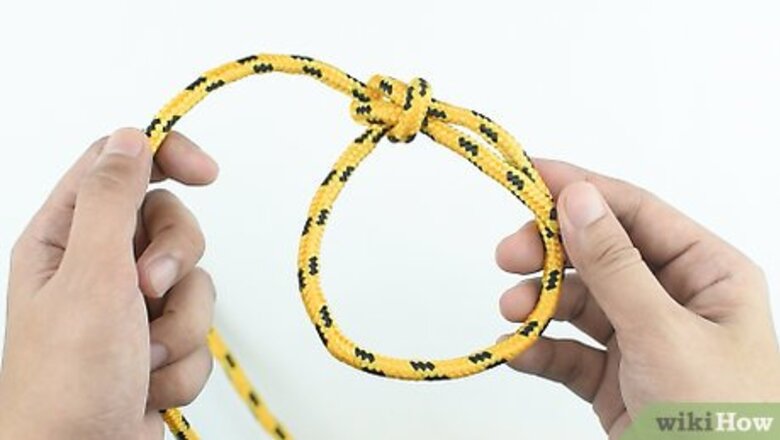
views
X
Research source
The bowline, pronounced 'Bowlin' not 'bow-line', is secure, easy to make and unties easily even after being subjected to a heavy load. Follow these simple steps to learn how to tie a basic and running bowline, as well as how to untie them.
Tying the Standard Bowline
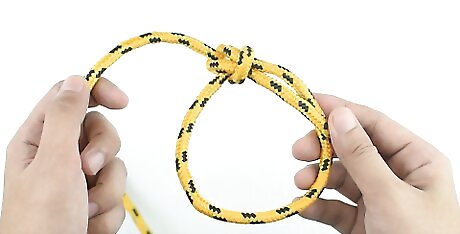
Use a mnemonic to remember how to tie the knot. Think of the loop as a "rabbit's hole" and the string end coming off the loop as a "tree". Imagine the other loose end of the string, which you're holding in your right hand, is the "rabbit". The rabbit comes up the hole, runs around the tree, and goes back down the hole. Another way to remember how to make this knot is with a rhyme:"Lay the bight to make a holeThen under the back and around the poleOver the top and through the eyeClinch it tight and let it lie"
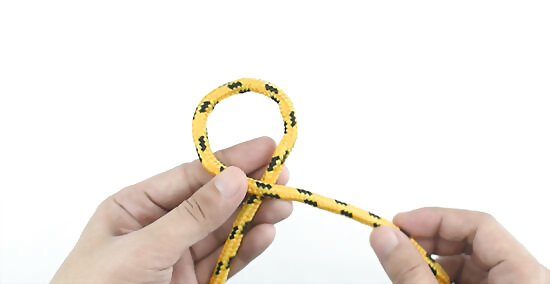
Hold one end of the rope in your left hand. This will be your ‘standing end’ or the end that does not move (consider this end the ‘hole’ and the ‘tree’.) Hold the other end in your right hand (this is the free end--the end of the rope that will be used to form the knot, or the ‘rabbit.’)Make a small loop with the end of the string in your left hand. This loop is the ‘hole’ the rabbit comes out of. These instructions assume you start with an "underhand" loop, so that the free end of the string is under the intersection formed by the loop.
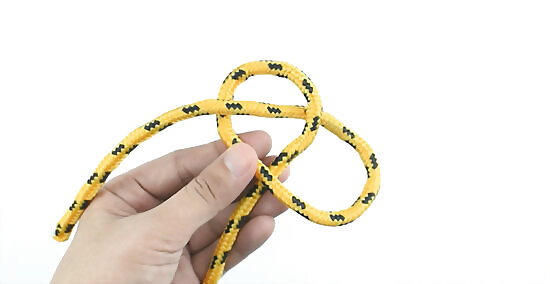
Draw the end of the string in your right hand (the rabbit) through the loop made by your left hand (the hole.) The end should be coming towards you as it goes through the loop. Think of this as the rabbit coming out of its hole.
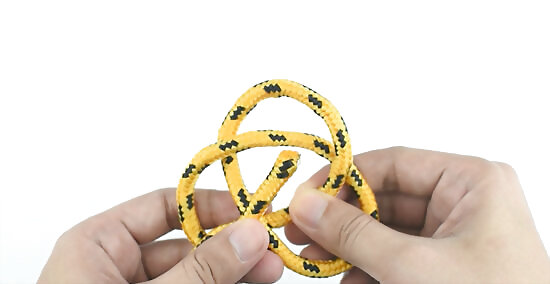
Bring the ‘rabbit’ end around (behind) the string. This string is the part pointing upwards from the loop (the ‘tree’.) Pull the ‘rabbit’ back through the loop and down into the ‘hole’. This time the end is going away from you.
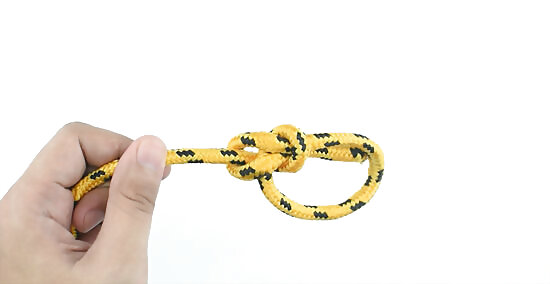
Take the top loose string in your left hand. Hold the other end in your right hand and pull the ends in opposite directions to tighten the knot.
Tying a Running Bowline
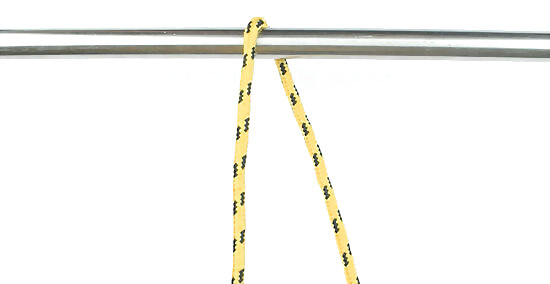
Run your rope around the thing you wish to tie your knot around. In particular, if you are in a boat and would like to secure your boat to a pole or piling, this is the way to do it. It also work for securing a rope to a pole on any occasion (it could even work for hanging up a hammock.)
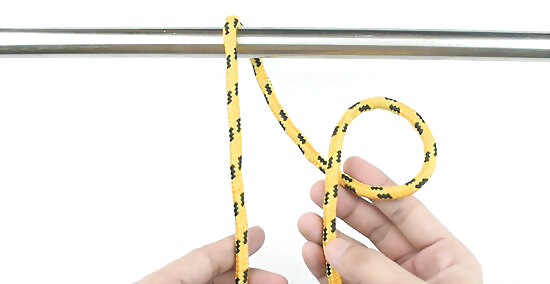
Form a loop with the running end. The running end is the end of the rope that is not connected to your boat, horse, etc. It is the end you will use to form the knot. Make a large, loose loop with the running end so that the tip of the rope hangs over the standing end (the part of the rope that your knot gets tied around.
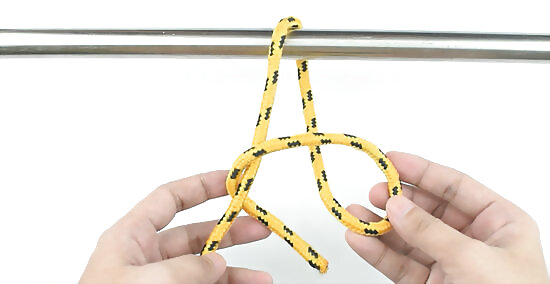
Pull the tip of the running end so that it goes around the standing end. It should go over the standing end and then back up from under the standing end.
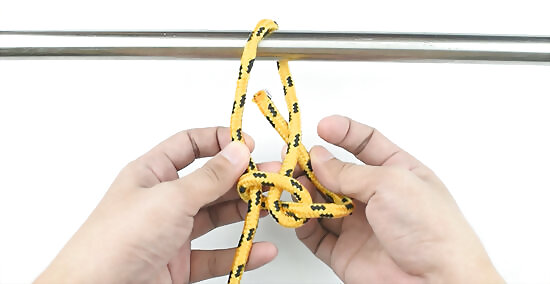
Pull the tip of the running end up through the loop you made previously. The tip should then continue up through the hole and around itself (around the straight part of the rope that leads to the loop you formed.)
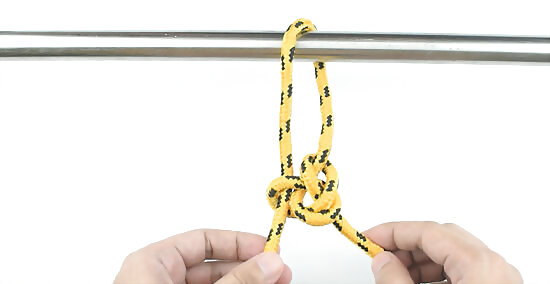
Pull the tip back through the hole. The tip should go down into the loop after you have sent it up and over itself. Pull the tip through so that it pokes out of the hole for a couple of inches.
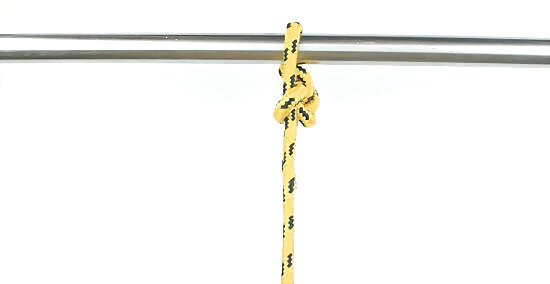
Pull on the standing end to secure the knot. Pulling on the standing end will slide the knot up to the pole.
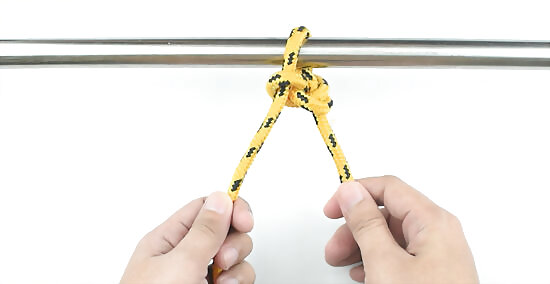
Once the knot is flush against the pole, pulling on the standing end will make the knot tighter.
Untying a Bowline Knot
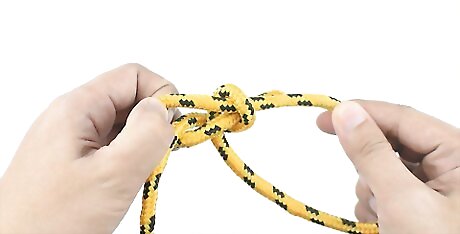
Undo a bowline knot. No matter how tight the knot has been pulled, one needs only to "break its back:"
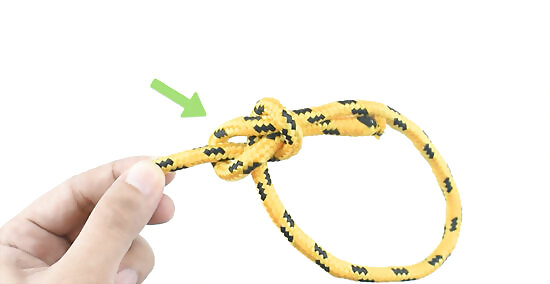
Locate the spot where the "running" end loops around the “standing” part. The running end is the end with which you tie the knot (the ‘rabbit.) The standing end is the ‘tree’ around which the ‘rabbit’ runs. This spot where the ‘rabbit’ loops around the ‘tree’ forms the shape of a cross.
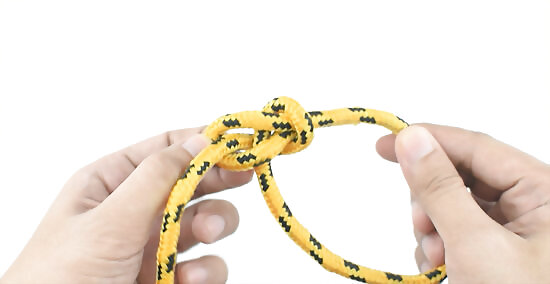
Push the loop up the standing part with your thumbs. You should push the loop away from the knot so that the back of the knot 'breaks'. This will release tension on the loop securing the running end and allow the knot to be untied.
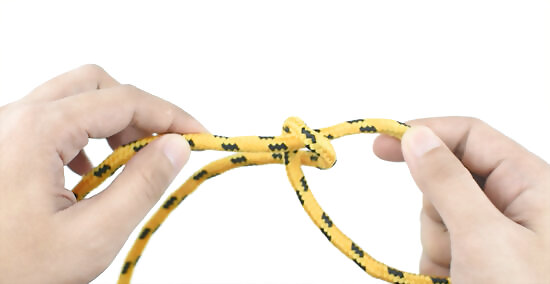
Pull the knot apart once the knot has loosened. It may help to push the two sides of the knot together so that there is absolutely no tension on the rope while you pull the knot apart.














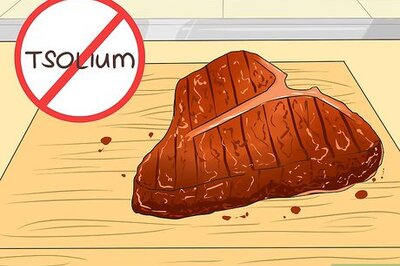

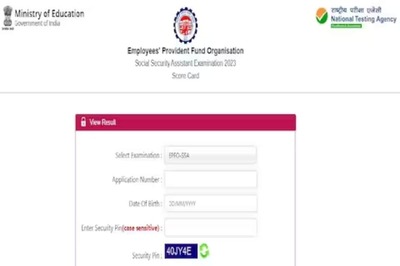

Comments
0 comment